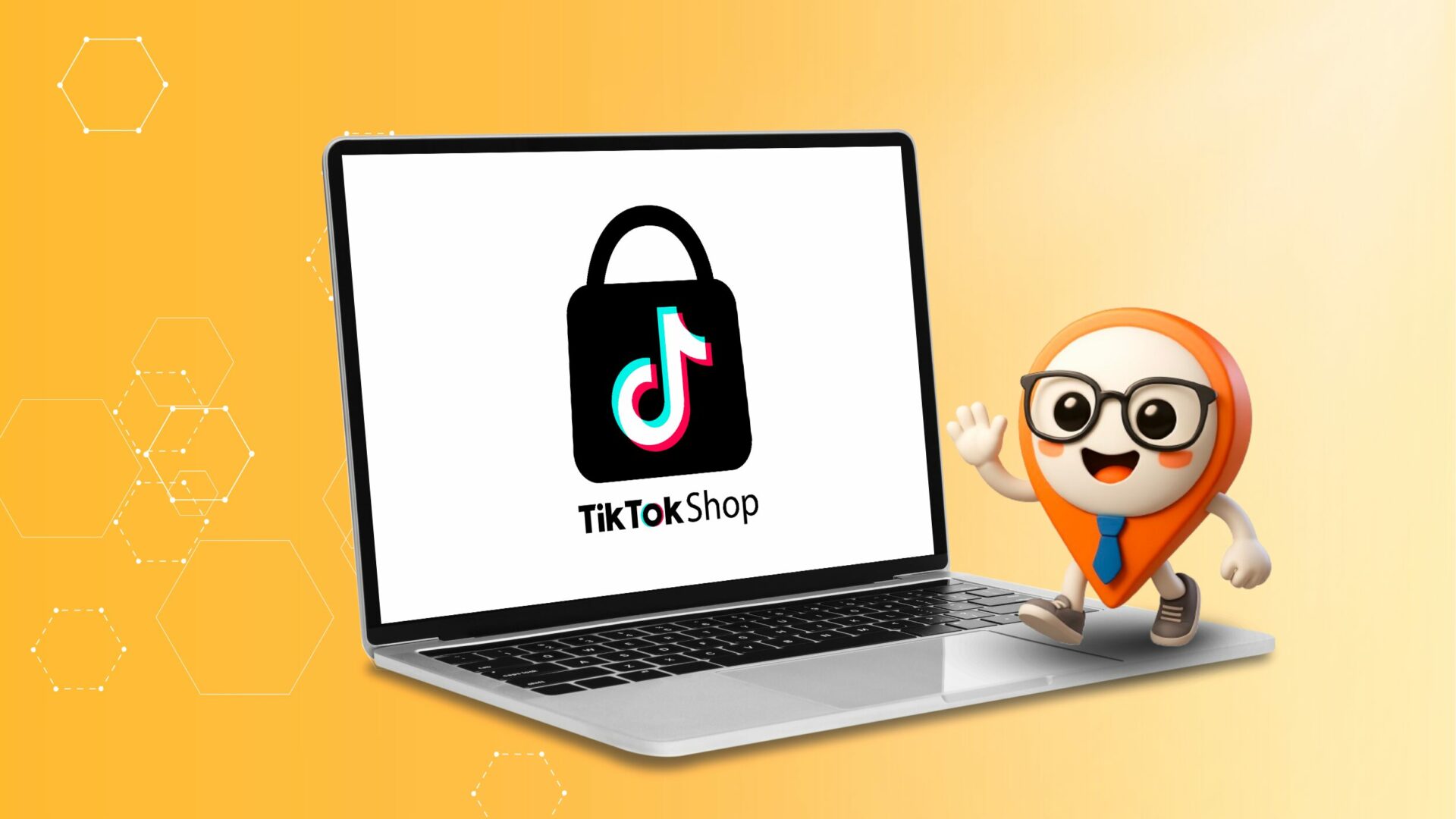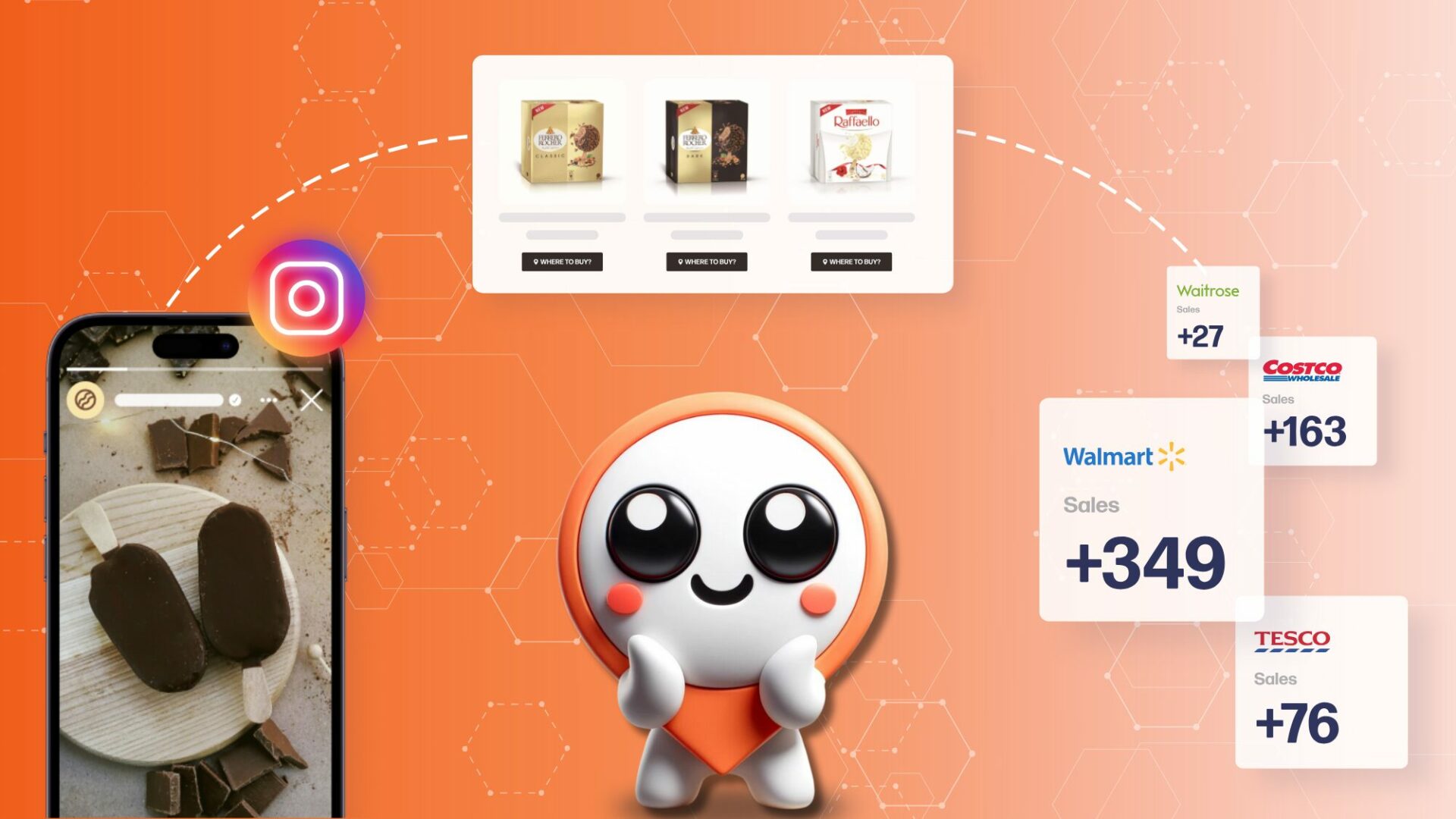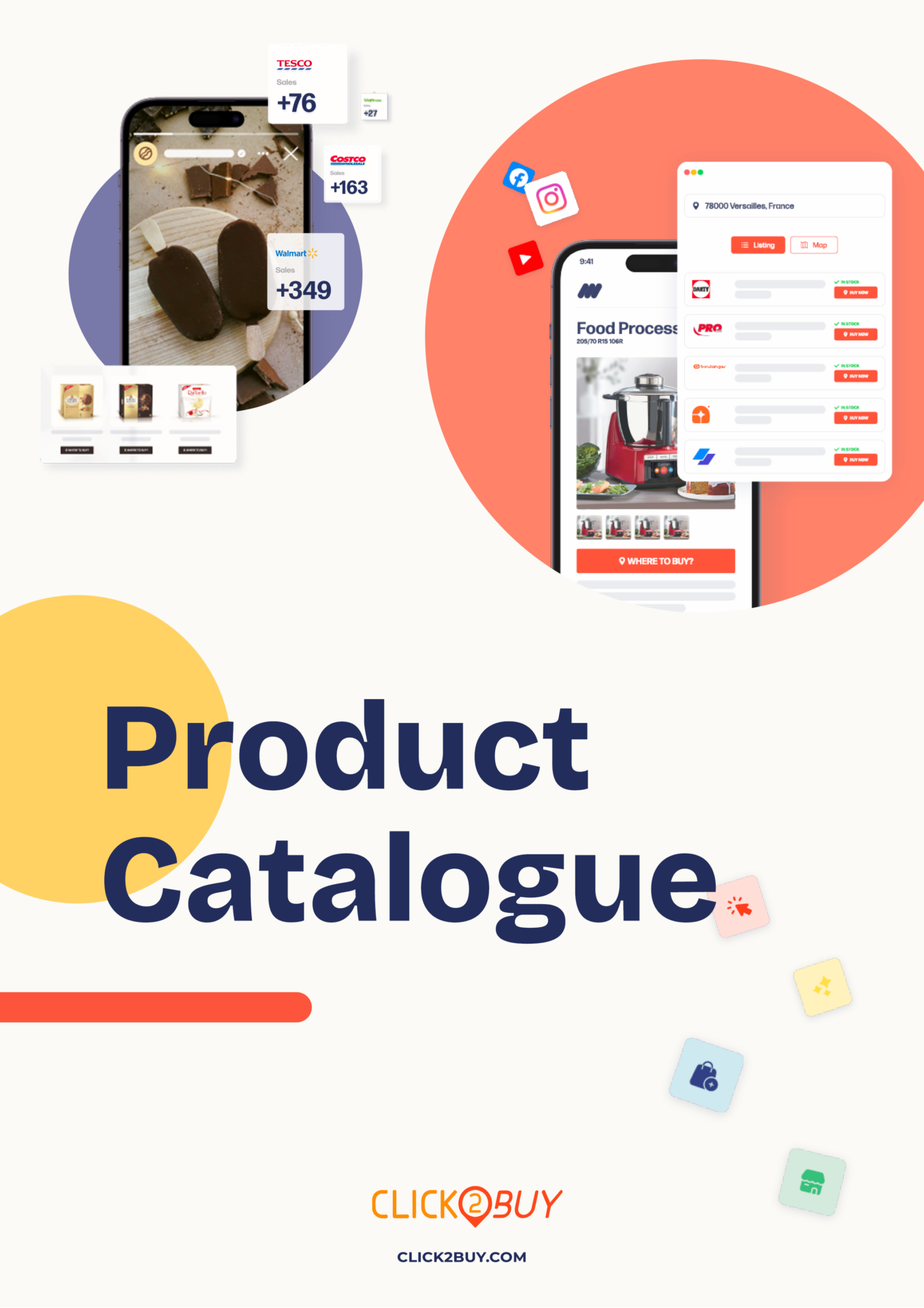Introduction
Quick commerce, a term that refers to the fast and easy purchase process, is a rapidly growing trend in ecommerce, and for good reason. It allows brands to seamlessly integrate the customer journey and purchasing process, by providing “where to buy” options within digital touch points, such as social media posts, video content, and even store locator. By doing so, it creates a convenient and seamless shopping experience for the customer.
According to a recent survey by Criteo, 49% of customers said that the ability to buy products directly from social media posts would make them more likely to make a purchase. Additionally, a study by the e-tailing group found that 67% of shoppers said they were more likely to buy from a brand they follow on social media if they had the option to do so within the app.
The benefits of quick commerce are not limited to consumers. Brands also stand to benefit from increased conversions and sales. In fact, a study by Shopify found that brands using quick commerce on Instagram saw an average of 30% more sales compared to those that didn’t.
The purpose of this guide is to provide an overview of quick commerce and offer actionable tips for brands looking to maximize their quick commerce potential. By understanding your audience, optimizing your product offerings, utilizing social media and influencer marketing, building a community, providing a seamless and secure checkout experience, measuring and improving performance, and implementing a quick commerce strategy, you can increase conversions and drive sales.
Understanding Your Audience
Before implementing a quick commerce strategy, it’s essential to understand your target market and their buying habits. Identifying your target market is the first step in creating a successful quick commerce strategy. It allows you to create campaigns, content and product offerings that are tailored to the needs and preferences of your target audience.
Identifying Your Target Market
It is important to research and understand the demographics, behaviors, and needs of your target market. Consider factors such as age, gender, location, income, and occupation when identifying your target market. This information can be obtained through surveys, focus groups, and customer data analysis.
Understanding Their Buying Habits and Preferences
Once you have identified your target market, it is important to understand their buying habits and preferences. Research their purchase history, the types of products they typically buy, and the channels they prefer to use when making a purchase.
Utilizing Data and Analytics to Inform Your Quick Commerce Strategy
Data and analytics can provide valuable insights into customer behavior, purchase patterns, and preferences. Utilize tools such as Google Analytics, social media analytics, and CRM systems to track and analyze customer data. This information can be used to identify peak purchase times, the most popular products among your target audience, and the channels they prefer to use when making a purchase.
By understanding your target market and their buying habits, you can create a quick commerce strategy that is tailored to their needs and preferences. This will increase the chances of success and drive sales.
Optimizing Your Product Offerings
Not all products are suitable for quick commerce, so it’s important to identify which products are best suited for this type of sales approach. By selecting the right products to feature in your quick commerce campaigns, you can increase conversions and drive sales.
Identifying Which Products are Best Suited for Quick Commerce
When determining which products to feature in your quick commerce campaigns, consider factors such as the product’s popularity, profitability, and ease of purchase. For example, fast-moving consumer goods (FMCG) such as snacks, beverages, and personal care products tend to be well-suited for quick commerce because they are frequently purchased and have a high profit margin.
Creating Product Bundles and Deals
Creating product bundles and deals can also drive quick sales. Consider offering a bundle of related products at a discounted price, or offering a limited-time deal to entice customers to make a purchase. According to a study by the e-tailing group, 55% of consumers said they would be more likely to make a purchase if they felt they were getting a good deal.
Providing Detailed Product Information and Photos
When showcasing products in your quick commerce campaigns, it’s important to provide detailed product information and high-quality photos. This includes product features, dimensions, materials, and care instructions. Additionally, including multiple product images, such as lifestyle shots and close-ups, can help customers to better visualize the product and make a more informed purchasing decision.
By identifying which products are best suited for quick commerce, creating product bundles and deals, and providing detailed product information and photos, you can increase the chances of success for your quick commerce campaigns and drive sales.
Remember that providing detailed product information and high-quality photos is important for quick commerce, as it can help to increase conversions and drive sales. It is essential to be transparent and honest when providing details about the product.
Overall, by optimizing your product offerings, you can increase conversions and drive sales by tailoring your products to the needs and preferences of your target audience.
Utilizing Social Media and Influencer Marketing
Social media and influencer marketing are powerful tools for driving quick sales. In fact, a study by the e-tailing group found that 67% of shoppers said they were more likely to buy from a brand they follow on social media if they had the option to do so within the app.
The Role of Social Media in Quick Commerce
Social media platforms such as Instagram, Facebook, and TikTok provide brands with the opportunity to connect with their target audience, build brand awareness, and drive sales through quick commerce. By creating shoppable posts, stories, and live streams, brands can provide customers with the ability to purchase products directly within the app, making it easy and convenient for them to make a purchase.
Identifying and Working with Influencers in Your Industry
Working with influencers in your industry can also be an effective way to drive quick sales. Influencers have a large and engaged following, which can help to increase brand awareness and drive sales. When working with influencers, it’s important to select those that align with your brand values and have a following that is similar to your target audience.
Creating Social Media Campaigns and Content that Drive Quick Sales
Creating engaging and compelling social media campaigns and content that drive quick sales is crucial. This includes creating visually appealing posts, using strong call-to-action language, and making it easy for customers to make a purchase. Additionally, consider using Instagram and Facebook Shopping to create a seamless shopping experience for customers.
By utilizing social media and influencer marketing, you can increase brand awareness, drive quick sales, and connect with your target audience in a way that is both authentic and effective.
Engage and Retain Customers by Creating a Community
Building a strong community around your brand is another way to maximize your quick commerce potential and leads to customer loyalty. According to a study by Marketing Metrics, the probability of selling to a customer is 60-70% while the probability of selling to a new customer is only 5-20%.
Building a Quick Commerce Community
To create a sense of community and foster customer loyalty, you must provide a platform for customer engagement by creating a space where customers can interact with each other, share ideas and provide feedback. Additionally, you should actively listen to customer feedback and continuously improve your offerings to meet their needs. By building a strong and loyal customer base, you can ensure the growth and success of your brand.
Customized Shopping Experience
Data and personalization are becoming increasingly important in the realm of quick commerce. Actually, using data in your quick commerce strategy can help you leverage customer behavior and preferences to offer personalized recommendations, streamline the purchasing process, and ultimately enhance the overall customer experience.
Importance of Personalization in Quick Commerce
As consumers become more accustomed to the convenience and speed of online shopping, you must adjust your quick commerce strategy to keep up with the times. One way you can stand out from competition is through personalization – leveraging data about customers’ preferences and behaviors to create a tailored experience for each user. Personalizing customer experiences isn’t just beneficial for shoppers; when done correctly, it also has significant benefits for business owners as well.
Personalization in quick commerce is essential for businesses that want to create a positive customer experience, foster loyalty, and drive sales. By leveraging data about customers’ behaviors and preferences, you can deliver highly targeted messages that speak directly to each user’s individual needs.
Providing Seamless and Secure Checkout Experience
Providing a seamless and secure checkout experience is crucial for driving quick sales. In fact, a study by Baymard Institute found that 67% of online shopping carts are abandoned, with the top reason for abandonment being a “too long/complicated checkout process.”
Importance of User Experience in Quick Commerce
The user experience (UX) of your checkout process is critical for driving quick sales. This includes ensuring that the process is easy to navigate, fast, and secure. Consider using a mobile-optimized checkout process and providing multiple payment options such as credit card, PayPal, and Apple Pay. By providing a seamless checkout experience, you can reduce cart abandonment and increase conversions.
Utilizing Mobile-Optimized Checkout and Payment Options
With the growing popularity of mobile commerce, it’s important to ensure that your checkout process is mobile-optimized. This includes making sure that your checkout process is easy to navigate on a smaller screen and that the buttons are large enough to be easily tapped. Additionally, providing multiple payment options such as credit card, PayPal, and Apple Pay can also improve the user experience and increase conversions.
Ensuring Customer Data and Payment Security
Ensuring the security of customer data and payment information is crucial for building trust and driving quick sales. Consider using SSL encryption to protect customer data and payment information, and ensure that your website is PCI compliant. Additionally, you can also provide customers with the option to save their payment information for future purchases, making it even easier for them to make a quick purchase.
By providing a seamless and secure checkout experience, you can increase conversions and drive quick sales. Remember that providing a seamless and secure checkout experience is crucial for building trust and driving quick sales.
Measuring and Improving Performance
Measuring and improving performance is crucial for maximizing your quick commerce potential. By setting goals, tracking performance metrics, analyzing customer feedback and data, and continuously testing and improving your strategy, you can ensure that your quick commerce efforts are successful.
Setting Goals and Tracking Performance Metrics
The first step in measuring and improving performance is setting goals and tracking performance metrics. This includes tracking key performance indicators (KPIs) such as conversion rate, average order value, and customer lifetime value. By setting goals and tracking performance metrics, you can determine which areas of your quick commerce strategy are working well and which areas need improvement.
Analyzing Customer Feedback and Data
Analyzing customer feedback and data is crucial for understanding how to improve your quick commerce strategy. This includes analyzing customer reviews, survey responses, and social media comments to understand what customers like and dislike about your products and services. Additionally, by analyzing website analytics data, you can understand how customers are interacting with your website and which pages are performing well and which pages need improvement.
Continuously Testing and Improving Your Quick Commerce Strategy
Continuously testing and improving your quick commerce strategy is crucial for maximizing your quick commerce potential. This includes testing different product bundles and deals, experimenting with different pricing strategies, and testing different marketing campaigns. Additionally, by continuously testing and improving your quick commerce strategy, you can quickly identify and address any issues that arise, ensuring that your quick commerce efforts are successful.
By measuring and improving performance, you can ensure that your quick commerce efforts are successful and continue to drive quick sales. Remember that continuously testing and improving your quick commerce strategy is crucial for maximizing your quick commerce potential.
Conclusion
In this guide, we’ve covered the key strategies and best practices for maximizing your quick commerce potential as a brand. From understanding your audience and optimizing your product offerings to utilizing social media and influencer marketing, and providing a seamless and secure checkout experience, there are many ways to tap into the power of quick commerce to drive sales and grow your business.
In summary, here are some of the key takeaways from this guide:
- Quick commerce is a growing trend that allows brands to capitalize on impulse buying behavior by making it easy for customers to purchase products directly from digital touch points.
- To succeed with quick commerce, it’s essential to understand your target market and use data and analytics to inform your strategy.
- Optimizing your product offerings, utilizing social media and influencer marketing, building a community, customized shopping experience, providing a seamless and secure checkout experience can all help drive quick sales.
- Measuring and improving your performance on a regular basis is crucial for continuing to optimize your quick commerce strategy over time.
As you implement these strategies and best practices, it’s important to remember that the customer journey doesn’t end at the point of sale. One of the keys to success with quick commerce is providing customers with a where to buy solution, like a store locator, so they can easily find your products in-store or online. Especially as in the near future, quick commerce will be revolutionized by Artificial Intelligence and automation. Consumers can look forward to even more convenient shopping experiences tailored to their preferences and needs with greater speed and efficiency than ever before!








